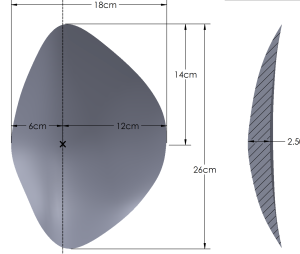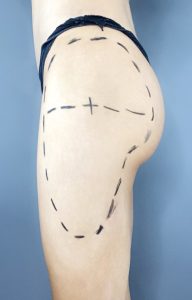The breast and buttock regions dominate the locations for aesthetic implant augmentation on the body based on largely female requests. The hip area has become an increasingly popular request for implant augmentation due to its proximity to the buttocks and the ability to help provide some visible more feminine curves below the waistline.
But the hip region is a very unique area for implant augmentation because of its vertical orientation below the iliac crest. In addition the implant is unable to beplscd as well as an inability for the implant to be placed in a subfascial or intra-submuscular pocket location. Besides these limitation there are not any standard off-the-shelf hip implants made specifically for this purpose. Surgeons will use a variety of implants made for other parts of the body so they have their shape limitations.
In the Online First section of the July 2022 issue of the American Journal of Cosmetic Surgery an article was published on this topic entitled ‘Concepts in Hip Implant Body Contouring: Patient Evaluation & Implant Fabrication’. In this paper the authors review the indication for hip implants as well as their fabrication.
One of the major points of the paper is that due to unique characteristics of the hip region patients should at least try injectable fat grafting first if they have the fat stores to do so. This is recommended, not because the take of fat injections is very high or reliable in the hip region, but because of their relatively high complication rates…or at least the potential for them.


In conclusion when hip augmentation is requested, fat transfer is the preferred initial procedure. If there is an insufficient volume of fat to augment both the buttocks and hip area, hip fat grafting is preferred to avoid the use of a hipimplant. The reason for this treatment recommendation is to avoid the hip implant due to its higher risk profile. Buttock implants have a lower risk profile. Once the indication for the hip implant is confirmed, custom silastic hip implants are designed, fabricated, and surgically placed to provide the patient desired cosmetic hip augmentation.
Dr. Barry Eppley
Indianapolis, Indiana




